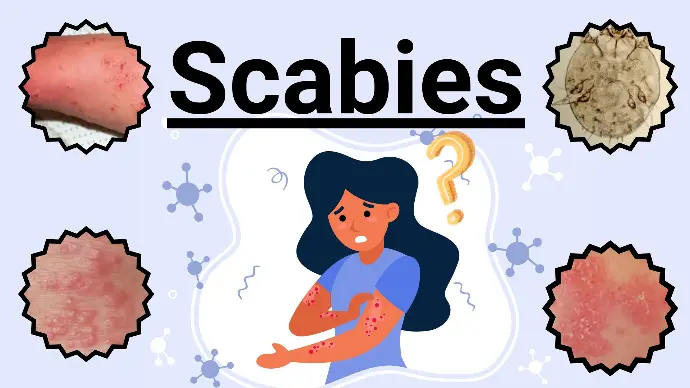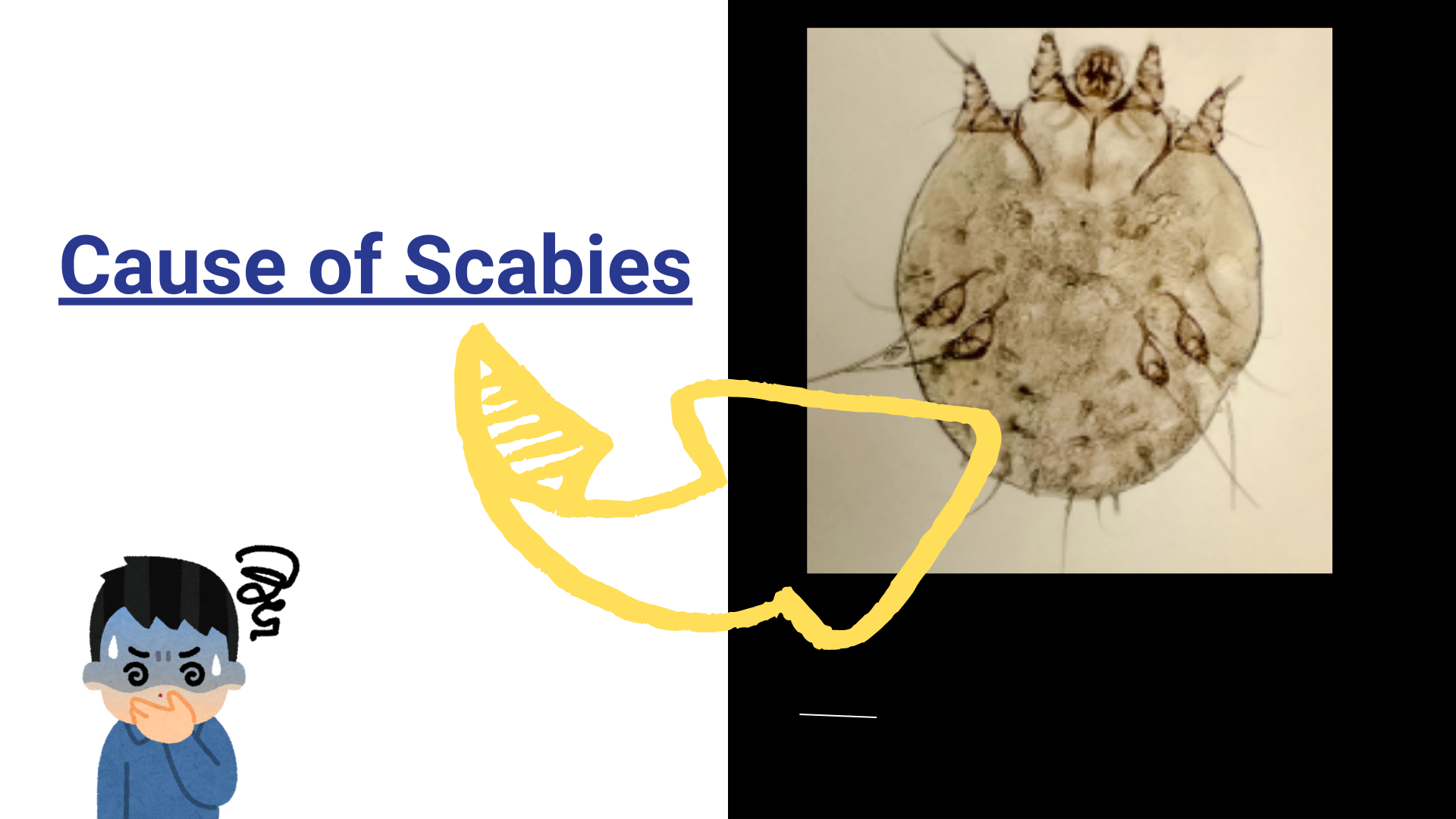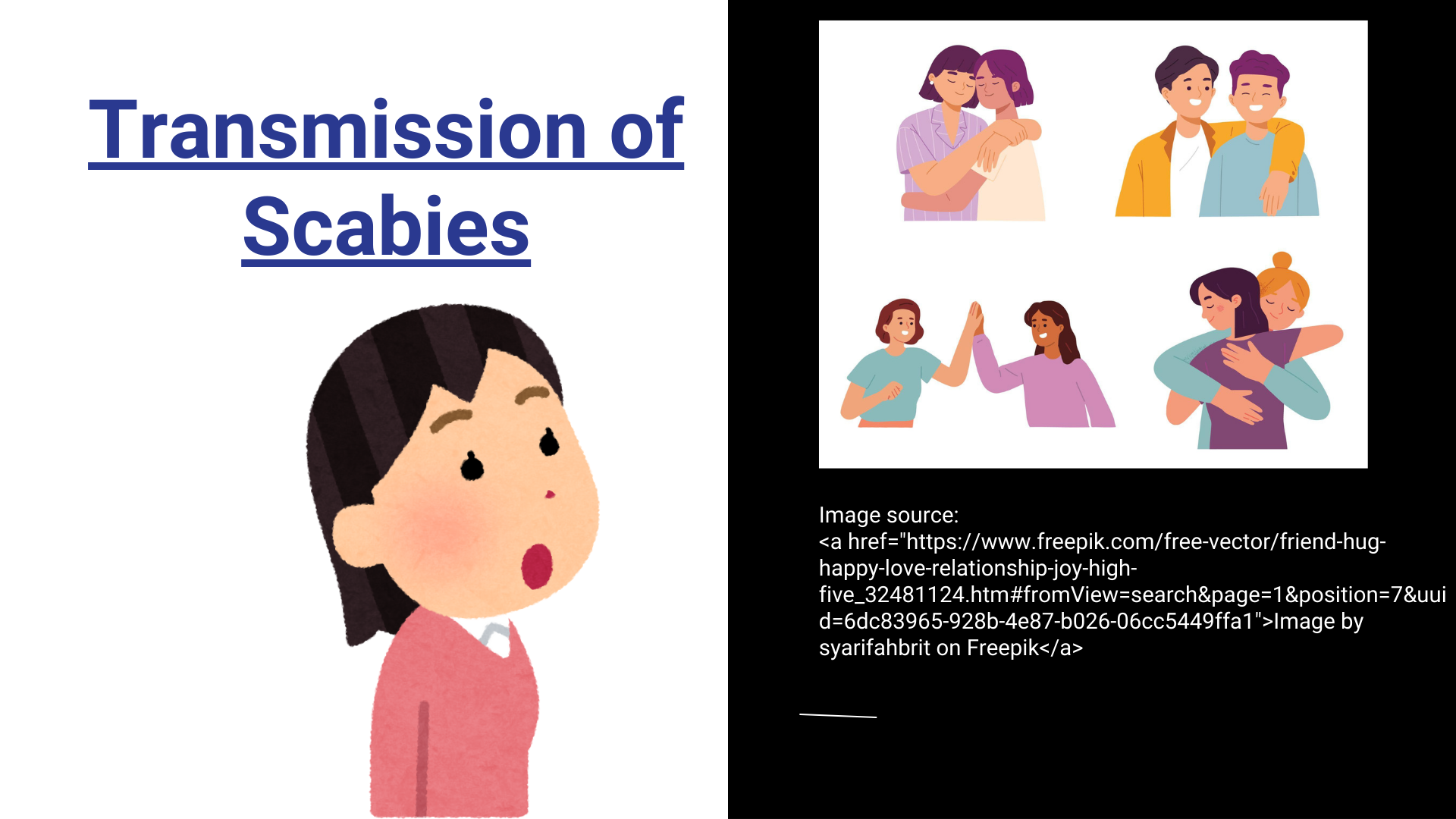Scabies
An In-Depth Overview
What are Scabies?
Scabies is a contagious skin condition caused by tiny mites known as Sarcoptes scabiei. These mites burrow into the upper layers of the skin, leading to intense itching, particularly severe at night. Scabies can affect anyone, regardless of age or hygiene, and is highly transmissible through close, prolonged skin-to-skin contact.
Clink on the image to watch full lecture on Scabies on Dailymotion

Cause of Scabies
The primary cause of scabies is the infestation of Sarcoptes scabiei mites. These microscopic parasites create tunnels in the skin where they live and lay eggs. The immune response to these mites and their waste products results in the characteristic itching and rash associated with scabies.

Transmission of Scabies
Scabies spreads mainly through direct, prolonged contact with an infected individual. This includes everyday interactions such as hugging, holding hands, or sexual activity. It can also spread through shared clothing, bedding, or towels, though this is less common.

Presentation of Scabies
When a person is exposed to scabies for the first time, symptoms might not appear for up to 2 months. However, they can still transmit the mites during this period. For individuals with a previous scabies infection, symptoms can appear as soon as 1 to 4 days after re-exposure.
Signs and Symptoms of Scabies
The most common signs and symptoms include:
- Intense Itching: Often worse at night.
- Pimple-Like Rash: Red, inflamed bumps on the skin.
- Thread-Like Burrows: Tiny, wavy lines in the skin where mites have burrowed.
- Sores and Blisters: Resulting from scratching.
Location of Scabies on Human body
The rash commonly appears in specific areas such as:
- Finger Webs: Between the fingers.
- Wrists: On the inner surfaces.
- Axillae: Underarms.
- Areolae: Around the nipples.
- Umbilicus: Belly button.
- Lower Abdomen: Near the groin.
- Genitals: Including the pubic area.
- Buttocks: Including the area around the anus.
This distribution forms an imaginary circle known as the "Circle of Hebra."

Types of Scabies
Scabies can present in several forms:
- Classic Scabies: The common form with typical symptoms.
- Nodular Scabies: Characterized by large, itchy nodules, often in the groin or axillae.
- Crusted (Norwegian) Scabies: Severe form with thick, crusted skin lesions, often found in immunocompromised individuals.
- Bullous Scabies: Rare form with large, fluid-filled blisters.
How to Prevent Scabies
To prevent the spread of scabies:
- Limit Contact: Avoid skin-to-skin contact with infected individuals until treatment is completed.
- Examine Close Contacts: Household members and sexual partners should be checked and treated if necessary.
- Clean and Disinfect: Wash and dry all bedding and clothing in hot water and use a hot dryer cycle or dry cleaning. Seal non-washable items in a plastic bag for a week.
- Maintain Hygiene: Clean and vacuum living areas where an infected person has been.
Treatment
Effective treatment options include:
1. Creams, Lotions, or Ointments:
Applied to the entire body, typically at bedtime and washed off in the morning. Common treatments are:
- 5% Permethrin Cream: The first-line treatment.
- 0.5% Malathion in Aqueous Base: Alternative for resistant cases.
- 10–25% Benzyl Benzoate Emulsion: Often used in some regions.
- 5–10% Sulfur Ointment: Another option, particularly for young children and pregnant women.
2. Oral Medications:
Ivermectin is highly effective for severe or crusted scabies but should not be used by pregnant women or children under 15 kg. It is particularly useful for individuals with weakened immune systems or when topical treatments are ineffective.